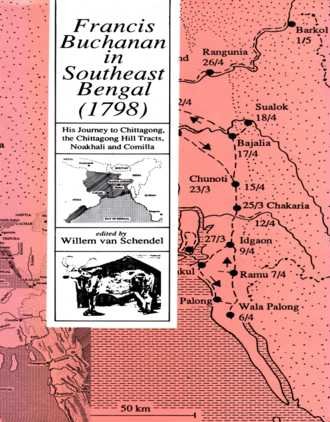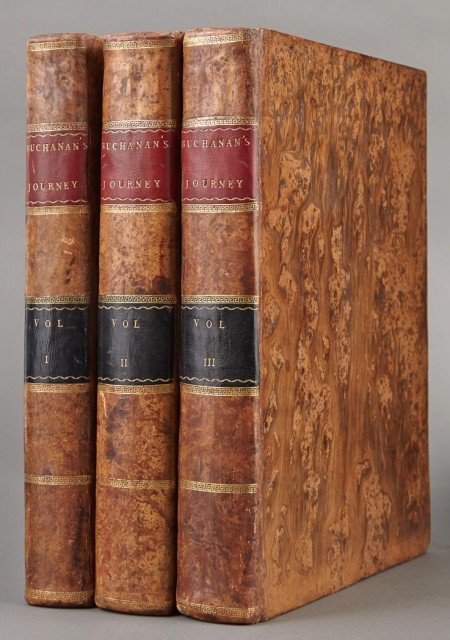Francis Buchanan-Hamilton
Born 15 February 1762
Died 15 June 1829
Francis Buchanan FRS FRSE FLS, later known as Francis Hamilton but often referred to as Francis Buchanan-Hamilton, was a Scottish physician who made significant contributions as a geographer, zoologist, and botanist while living in India. He did not assume the name of Hamilton until three years after his retirement from India.
Francis Buchanan was born at Bardowie, Callander, Perthshire where Elizabeth (his mother), lived on the estate of Branziet; his father Thomas, a physician, came in Spittal and claimed the chiefdom of the name of Buchanan and owned the Leny estate. Francis Buchanan matriculated in 1774 and received an MA in 1779.
As he had three older brothers, he had to earn a living from a profession, so Buchanan studied medicine at the University of Edinburgh, graduating MD in 1783. His thesis was on febris intermittens (malaria). He then served on Merchant Navy ships to Asia, and served in the Bengal Medical Service from 1794 to 1815. He also studied botany under John Hope in Edinburgh. Hope was among the first in Britain to teach the Linnean system of botanical nomenclature, although he knew of several others having been trained under Antoine Laurent de Jussieu.
Surgeon on Ships
Buchanan's early career was on board ships plying between England and Asia. The first few years were spent as surgeon aboard the Duke of Montrose sailing between Bombay and China under Captain Alexander Gray and later Captain Joseph Dorin. He then served on the Phoenix along the Coromandel Coast again under Captain Gray. In 1794, he served on the Rose, sailing from Portsmouth to Calcutta, and reaching Calcutta in September, he joined the Medical Service of the Bengal Presidency. Buchanan's training was ideal as a surgeon naturalist for a political mission to the Kingdom of Ava in Burma under Captain Symes (as replacement for the previously appointed surgeon Peter Cochrane). The Ava mission set sail on the Sea Horse and passed the Andaman Islands, Pegu, and Ava before returning to Calcutta.
Surveyor
In 1799, after the defeat of Tipu Sultan and the fall of Mysore, he was asked to survey South India, resulting in A Journey from Madras through the Countries of Mysore, Canara and Malabar (1807). He also wrote An Account of the Kingdom of Nepal (1819).
He conducted two surveys, the first of Mysore in 1800 and the second of Bengal in 1807–14. From 1803 to 1804, he was surgeon to the governor general of India Lord Wellesley in Calcutta, where he also organized a zoo that was to become the Calcutta Alipore Zoo. In 1804, he was in charge of the Institution for Promoting the Natural History of India founded by Wellesley at Barrackpore.
From 1807 to 1814, under the instructions of the government of Bengal, he made a comprehensive survey of the areas within the jurisdiction of the British East India Company. He was asked to report on topography, history, antiquities, the condition of the inhabitants, religion, natural productions (particularly fisheries, forests, mines, and quarries), agriculture (covering vegetables, implements, manure, floods, domestic animals, fences, farms, and landed property, fine and common arts, and commerce (exports and imports, weights and measures, and conveyance of goods). His conclusions are reported in a series of treatises that are retained in major United Kingdom libraries; many have been reissued in modern editions. They include an important work on Indian fish species, entitled An account of the fishes found in the river Ganges and its branches (1822), which describes over 100 species not formerly recognised scientifically.
He also collected and described many new plants in the region, and collected a series of watercolours of Indian and Nepalese plants and animals, probably painted by Indian artists, which are now in the library of the Linnean Society of London.
Above: Francis Buchanan, an employee of East India Company. But, that may or may not be an accurate portrait as this may be just a poor reproduction of “George Buchanan. From an original at Hamilton” as found in J. Pinkerton “The Scottish Gallery of Portraits of Eminent Persons of Scotland”, 1799. Book available online : https://www.google.com.au/books/edition/The_Scotish_Gallery_Or_Portraits_of_Emin/ZNJVAAAAcAAJ?hl=en&gbpv=1 – around page 80…
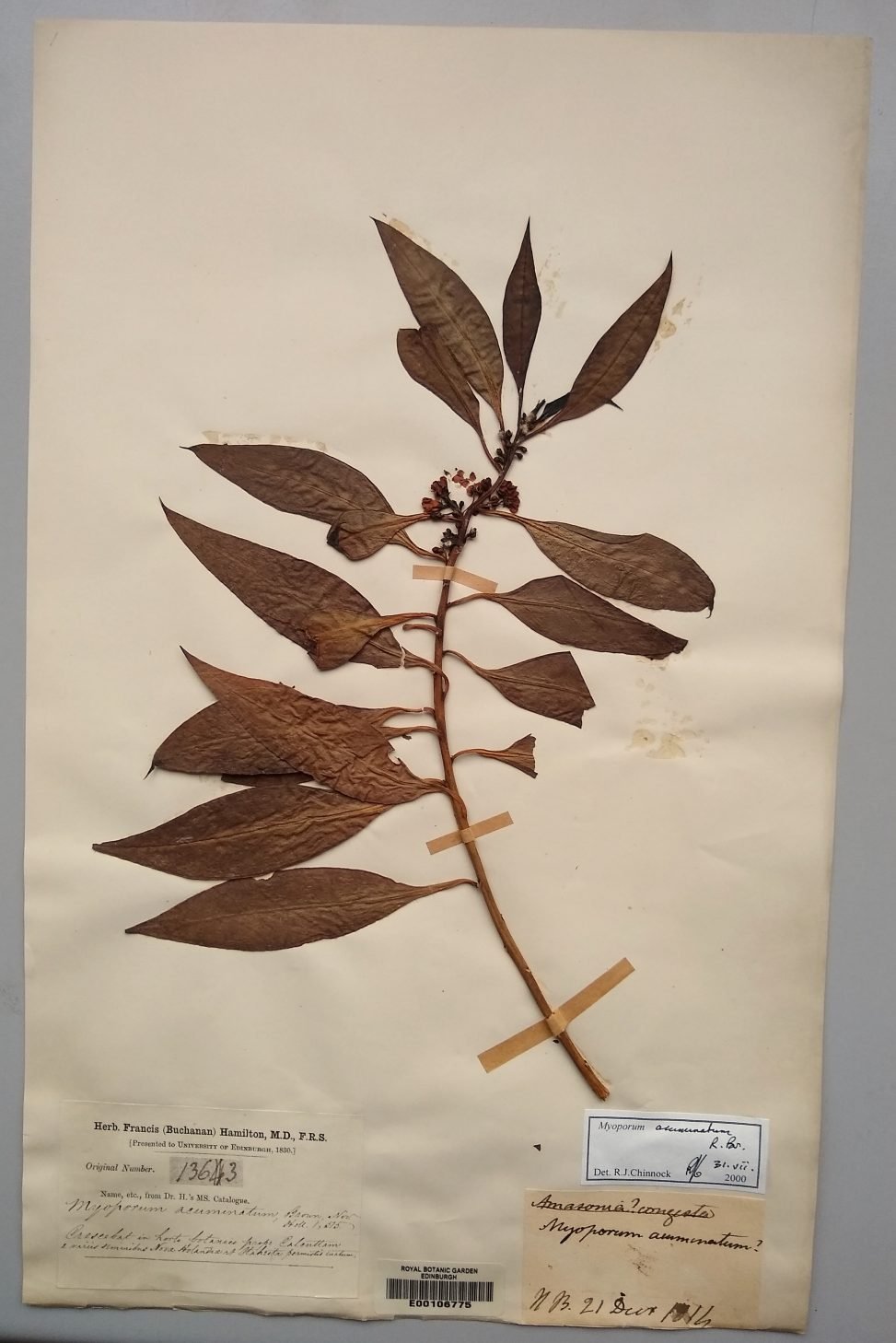
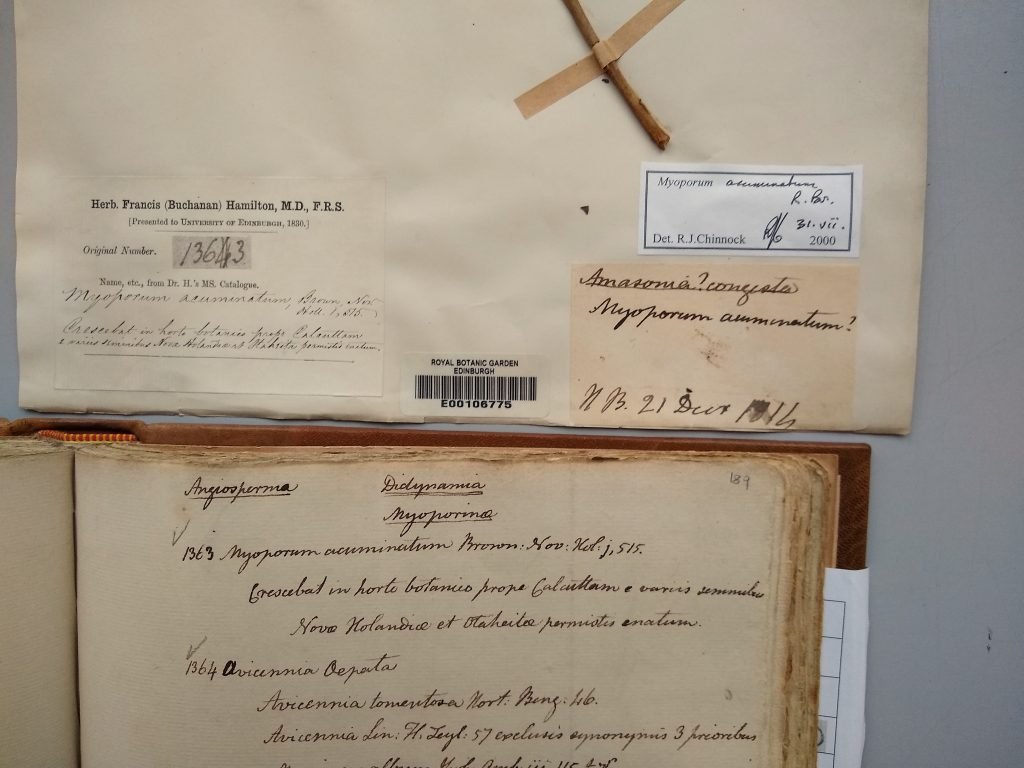
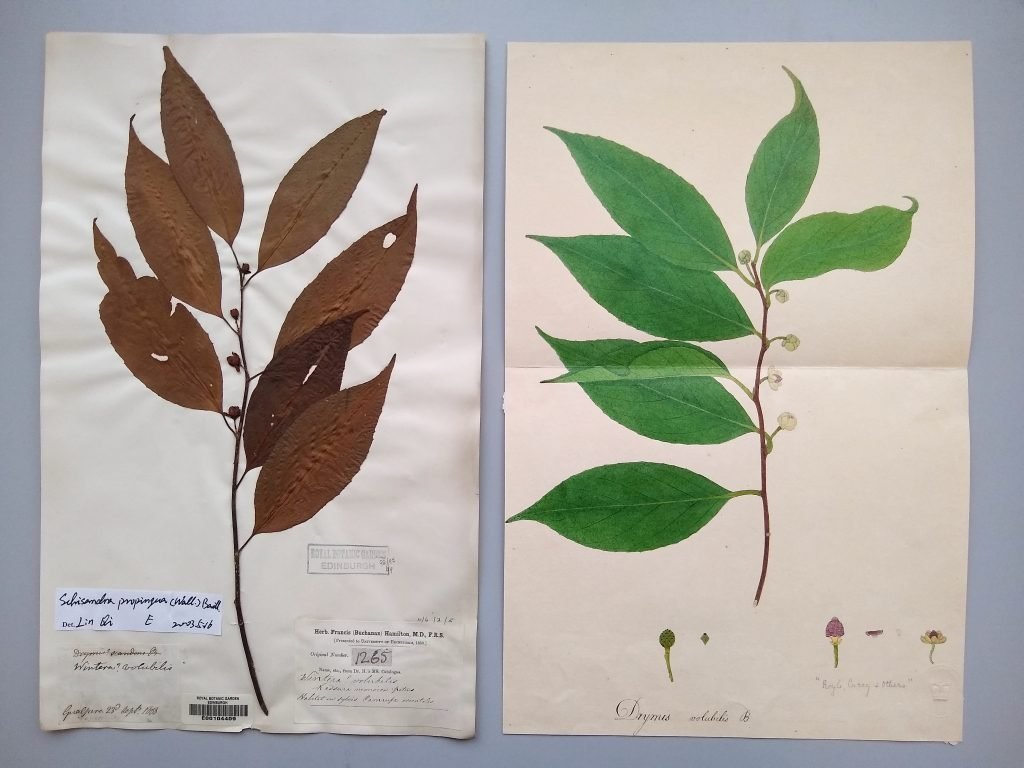
Three original volumes of a Buchanan’s Journey that went for auction in 2018
He was elected a Fellow of the Royal Society in May, 1806, and a Fellow of the Royal Society of Edinburgh in January 1817.
Dr Francis Buchanan Claim to become Chief of Clan Buchanan
In 1826 he made claim for Chiefdom. Read about it here. Dr Francis had an astonishing public published argument with John Riddel (noted Scottish historian and genealogist), however he died shortly after, and the stouch probably crushed his stellar reputation. Riddel seemingly called him out for setting himself up for three chiefships because the Buchanan one did not work out since Francis effectively rulled himself out by changing his name from Buchanan to Hamilton to inherit his mothers estate. As such Riddel seemingly refused to support him and then laid into him about this matter so publically....





